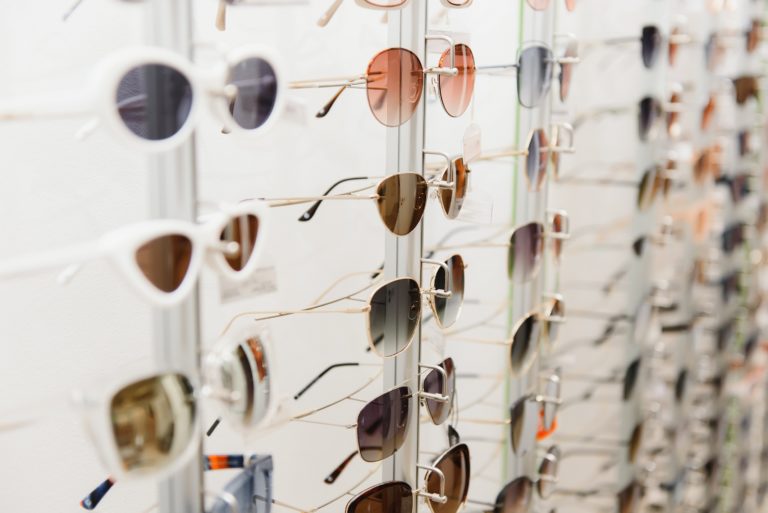
Sunglasses
Who should wear sunglasses? Why should they wear sunglasses?
In principle it is wise for everyone to protect their eyes from unnecessary exposure to ultraviolet rays. They do not necessarily have to be dark. They are sunglasses. Darker does not mean more protection. Who should wear them? People living at high altitudes, in snowy environments are more exposed to ultraviolet rays and should use sunglasses more. Also people taking medicines that increase sensitivity to light should take special care: some of these medicines are widely used with oral anti-diabetics, allopurinol, some oral contraceptives, tetracyclines. Others such as verteprofin are used in more specific conditions.
Is there an age from which sunglasses should be worn?
The lens becomes progressively more pigmented with age which makes it act as a filter that protects the retina from ultraviolet rays. Thus, children's eyes are more exposed to ultraviolet rays than adults'. They must therefore be better protected.
Even when there is no sun, should sunglasses be worn? Why should they be worn?
As with the skin, the greatest radiation is reached between 10 A.M and 2 P.M. The fact that the sky is cloudy does not prevent harmful radiation and therefore the need for protection.
Are there any contraindication to wearing sunglasses? If yes, which?
It doesn't seem to exist
What is the best type of lens? (mirrored, opaque, transparent, coloured, glass...)
It is not these aspects that define the quality of the lens. The important thing is the ability to filter out UV rays that are harmful to the eye. The ideal lens should reduce visible light to a comfortable level and at the same time completely eliminate dangerous, invisible ultra-violet radiation.
The ability of a lens to filter out ultra-violet rays does not depend on the colour of the lens but on the chromophores (molecules which absorb invisible ultra-violet radiation) soaked into the plastic of the lens during its manufacture. The addition of this pigment to the lens adds little cost to its manufacture and actually protects it from harmful radiation. Even white lenses can significantly absorb ultra-violet radiation.
Plastic lenses are better than glass ones because they filter out ultraviolet rays better.
Lenses can be classified into 3 categories according to their UV absorption capacity. Cosmetic lenses absorb 60% of visible light; lenses for common use absorb up to 92% and lenses for special uses up to 97%. There are 3 types of ultra-violet radiation in sunlight: A, B and C. UV-A radiation (between 400 and 320 nm) is responsible for tanning the skin and is also emitted by the black lights used in tanning salons. UV-B radiation (320-290 nm) causes sunburn and skin cancer. UV-C radiation (290-100 nm) is used as a germicide and can also cause skin cancer. The eye must be protected against A and especially B radiation. The vast majority of sunglasses protect at least 90% against UV-B and 60% against UV-A radiation. Below this value is not acceptable.
Our eyes are well protected from radiation and under normal conditions receive only a small fraction of ultra-violet - B radiation. There are several protective factors: 1- The horizontal alignment of the eyes and orbits.
2- Blinking and closing the eyelids when exposed to light.
3- The eyebrows, the nose and the frown in the light.
What is the worst type of lens? How can they be identified?
High cost does not necessarily mean better quality. Poor quality lenses may have scratched pigment, be badly polished and distort images. When buying sunglasses it is a good idea to check whether they distort images. It is easy to do this: look through the lens at a linear object (e.g. a doorway) and move the lens sideways and up and down. If the image is distorted then the lens must be wrong (this does not apply with a prescription lens).
What features should be taken into account when thinking about buying sunglasses?
What you want. The colour of the lens is essential. Grey lenses do not alter natural colours, but can reduce contrast.
Green lenses alter the colours. Brown lenses seem to be the most satisfying as they allow good contrast and change natural colours less. Yellow lenses seem to improve distance vision and eliminate a lot of blue light (hunters and sportsmen). Polarised lenses reduce dazzle and may be more useful for anglers.
Can sunglasses be fitted with prescription lenses or is it better to wear contact lenses and sunglasses without graduation? Why?
They can be fitted with prescription lenses. If the person wears corrective prescription glasses, it is convenient that the sunglasses are also prescription fitted. If you wear contact lenses you can wear glasses without prescription.
What is the life span of a pair of sunglasses, that is, can they last a lifetime or do the lenses lose their characteristics with prolonged exposure to the environment?
Lenses can suffer trauma over time, which makes their surface uneven and decreases the quality of images.
Are there differences in the characteristics of spectacle lenses for snow, beach, extreme sports and others? Or is it just a question of fashion and marketing?
The issue has to do with the ability of the lenses to filter out UV and the configuration of the glasses.
The vast majority of lenses have the necessary characteristics to protect from harmful radiation in all conditions. The configuration of the glasses and their positioning is important. Wearing glasses 6mm away from the forehead increases UVB transmission tenfold. Ideally sunglasses should also protect against side radiation. Thus, in situations of greater reflectivity (snow reflects 88% of the radiations) the glasses should also consider this aspect.
How ergonomic should the sunglasses frame be? Why should it be ergonomic?
It should sit close to the forehead and also protect the sides.
Apart from the obvious ones, are there any differences between children's and adults' sunglasses? If yes, which ones and why?
They should never wear glasses with glass lenses because of possible trauma (adults should not either): They must be well-fitting to the face and also protect the side from radiation.
Should sunglass lenses vary according to eye colour? Why should they? If yes, which ones are best suited to each eye colour?
It doesn't seem to matter, as long as they have the necessary characteristics, i.e. good quality of the lens (scratches, distortions), good adaptation to the configuration of the face, lateral protection and absorption close to 100% for UV-B and UV-A.
Should people who suffer from light sensitivity always wear sunglasses? In what situations is it essential to wear sunglasses?
People with greater sensitivity should wear sunglasses whenever they feel they need them. What is important is protection from ultra-violet radiation.
It is best to wear sunglasses at certain times of the day (10-14 hours), in situations of greater light reflectivity (snow, beach, water), at higher altitudes, and for people taking certain medications (mentioned above).
Sunglasses, are they a matter of fashion or a pure need for the eyes to be protected?
Eyes, like skin, really need to be protected. Ultraviolet radiation is associated with a higher prevalence of cataracts, corneal lesions, pinguéculas, pterygium, and age-related macular degeneration.
Rufino Silva.
Ophthalmologist
CONTACTS
COIMBRA
Espaço Médico de Coimbra
Rua Câmara Pestana, n.º 35-37
3030-163 Coimbra, Portugal
Phone: +351 239 484 348 /Telm: +351 966 320 022
Fax: +351 239 481 487
E-mail: emc@oftalmologia.co.pt
AVEIRO
Rufino Silva - Clínica Oftalmológica
Av. Lourenço Peixinho, Nº 177-179, 2º andar
3800 - 167 - Aveiro
Tel: +351 234 382 847
Mobile: +351 918 644 767
E-mail: aveiro@oftalmologia.co.pt
FORM
COIMBRA
Espaço Médico de Coimbra
Rua Câmara Pestana, n.º 35-37
3030-163 Coimbra, Portugal
Phone: +351 239 484 348 /Telm: +351 966 320 022
Fax: +351 239 481 487
E-mail: emc@oftalmologia.co.pt
AVEIRO
Rufino Silva - Clínica Oftalmológica
Av. Lourenço Peixinho, Nº 177-179, 2º andar
3800 - 167 - Aveiro
Phone: +351 234 382 847
Mobile: +351 918 644 767
E-mail: aveiro@oftalmologia.co.pt
COIMBRA
Espaço Médico de Coimbra
Rua Câmara Pestana, n.º 35-37
3030-163 Coimbra, Portugal
Phone: +351 239 484 348 /Telm: +351 966 320 022
Fax: +351 239 481 487
E-mail: emc@oftalmologia.co.pt
AVEIRO
Rufino Silva - Clínica Oftalmológica
Av. Lourenço Peixinho, Nº 177-179, 2º andar
3800 - 167 - Aveiro
Phone: +351 234 382 847
Mobile: +351 918 644 767
E-mail: aveiro@oftalmologia.co.pt

